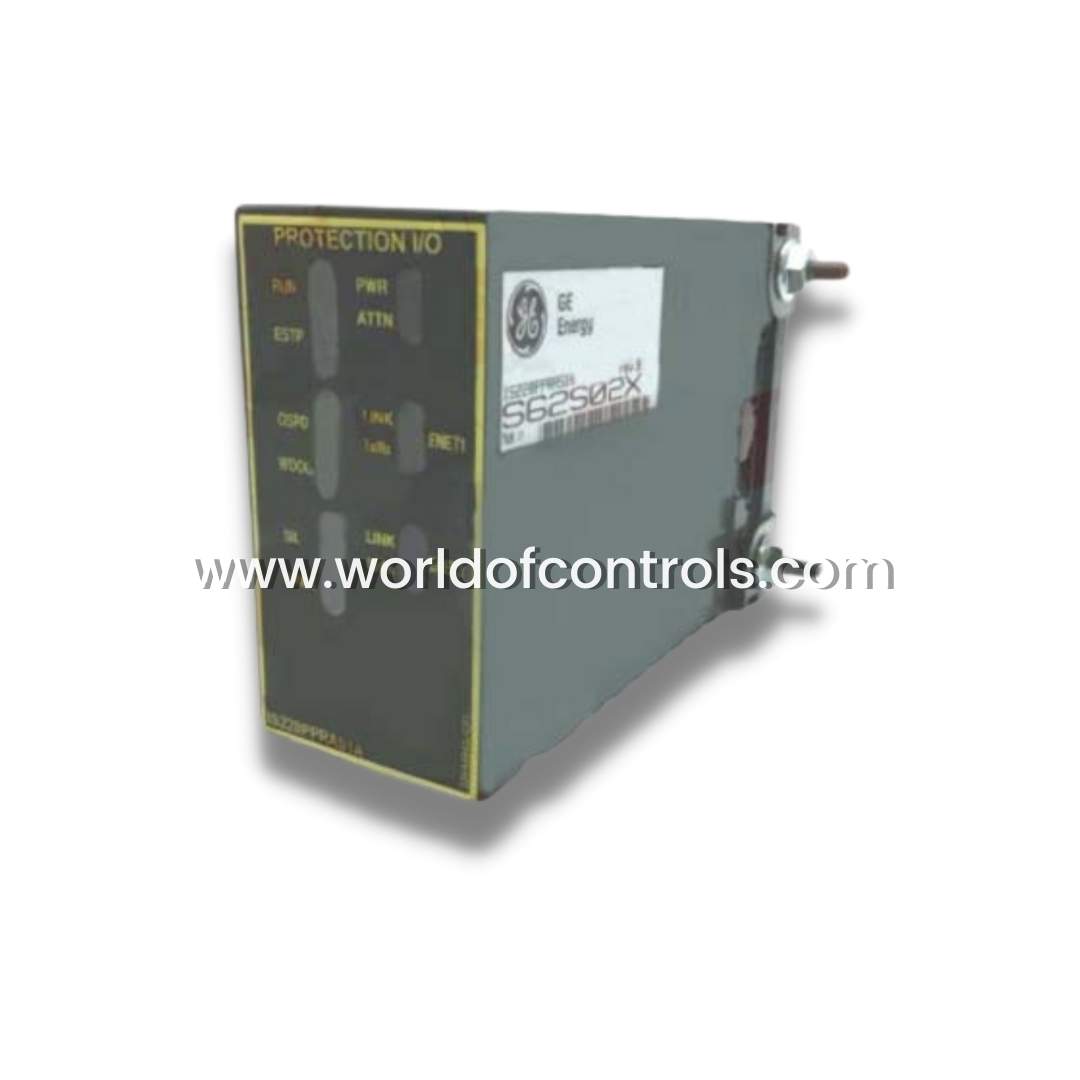
World Of Controls understands the criticality of your requirement and works towards reducing the lead time as much as possible.
IS220PPRAH1A - Emergency Turbine Backup Protection I/O Module is available in stock which ships the same day.
IS220PPRAH1A - Emergency Turbine Backup Protection I/O Module comes in UNUSED as well as REBUILT condition.
To avail our best deals for IS220PPRAH1A - Emergency Turbine Backup Protection I/O Module, contact us and we will get back to you within 24 hours.
SPECIFICATIONS:
Part Number: IS220PPRAH1A
Manufacturer: General Electric
Series: Mark VIeS
Board Type: Emergency Turbine Backup Protection I/O Module
Input Power Supply Voltage: 24 V DC
Number of Transducers: 2
Pressure wave frequency range: 1.5 Hz
Power Consumption: ≤ 15 W
Number of Input Channels: 16
Input Voltage: 0-5 V
Maximum lead Resistance: 15 maximum
MPU Pulse Rate Range: 2 Hz
Protocols Supported: MODBUS TCP/IP
Dimensions: 33.0 cm wide x 17.08 cm high
Mounting Type: Surface-mount
Operating Temperature: -20°C to +70°C
Repair: 3-7 Day
Availability: In Stock
Country of Origin: United States
Weight: 1.2 kg
FUNCTIONAL DESCRIPTION:
IS220PPRAH1A is an Emergency Turbine Backup Protection I/O Module manufactured and designed by General Electric as part of the Mark VIeS Series used in GE Distributed Turbine Control Systems. The Emergency Turbine Protection (PPRA) I/O packs and associated TREA terminal board provide an independent backup overspeed protection system. They also provide an independent watchdog function for the primary control and isolated trip contact inputs. A protection system consists of three triple modular redundant (TMR) PPRA I/O packs mounted to a TREA terminal board with the WREA option board included. PPRA is a derivative of the standard Mark VIe PPRO Emergency Turbine Protection I/O pack. It adds hardware and uses altered firmware to support six-speed inputs in applications where dual-speed sensors per shaft are fanned to three protection I/O packs. The majority of the configuration, variables, and behavior of the PPRA are identical to those found in the PPRO. PPRA is specific to the TREA terminal board equipped with the WREA option board.
COMPATIBILITY:
PPRA is available in a IEC 61508 certified version for use in IEC 61511 certified safety loops. PPRAS1A with TREAS1A and WREAS1A are the certified versions of the PPRA module. PPRA mounts directly on TREA, and with TREA it is required to have the WREA option board mounted on the PPRA application-specific circuit board Option Header connector. PPRA mounted on TREA with WREA will only function correctly with three PPRA I/O packs. Single and dual-pack operation is not possible.
In systems with a single controller, the controller R network should be connected to the PPRA on the JX1 connector, the S network should be connected to PPRA on the JY1 connector, and the T network should be connected to the PPRA on the JZ1 connector. All three networks are coming from the single controller. In systems with dual controllers, the controller R network should be connected to the PPRA on the JX1 connector, the S network should be connected to PPRA on the JY1 connector, and both the R and S networks should be connected to the PPRA on the JZ1 connector. In systems with three controllers, the R network should be connected to the PPRA on the JX1 connector, the S network should be connected to PPRA on the JY1 connector, and the T network should be connected to the PPRA on the JZ1 connector.
INSTALLATION:
OPERATIONS:
PROTECTIVE FUNCTIONS
WOC has the largest stock of OEM replacement parts for GE Distribution Control Systems. We can also repair your faulty boards and supply unused and rebuilt boards backed up with a warranty. Our team of experts is available round the clock to support your OEM needs. Our team of experts at WOC is happy to assist you with any of your automation requirements. For pricing and availability on parts and repairs, kindly contact our team by phone or email.
What is the purpose of the PPRA I/O pack and the TREA terminal board in turbine protection systems?
The PPRA I/O pack, together with the TREA terminal board, provides an independent backup overspeed protection system for turbines. It functions as an essential safeguard by independently monitoring and providing a watchdog function for the primary control system. The PPRA system operates in conjunction with triple modular redundant (TMR) architecture to ensure reliability and redundancy.
How does the PPRA differ from the PPRO I/O pack?
The PPRA I/O pack is a derivative of the PPRO but includes additional hardware and firmware modifications to support six-speed inputs. This makes it ideal for applications requiring dual-speed sensors per shaft distributed across three protection I/O packs. While the majority of configurations and behaviors of the PPRA are similar to the PPRO, the PPRA is tailored exclusively for use with the TREA terminal board and the WREA option board.
How is the PPRA connected in systems with different controller configurations?
In single-controller systems, the R, S, and T networks are connected to the JX1, JY1, and JZ1 connectors on the PPRA, respectively. In dual-controller systems, the R network connects to JX1, the S network to JY1, and both R and S networks to JZ1. For systems with three controllers, the R, S, and T networks are connected to the JX1, JY1, and JZ1 connectors, respectively.